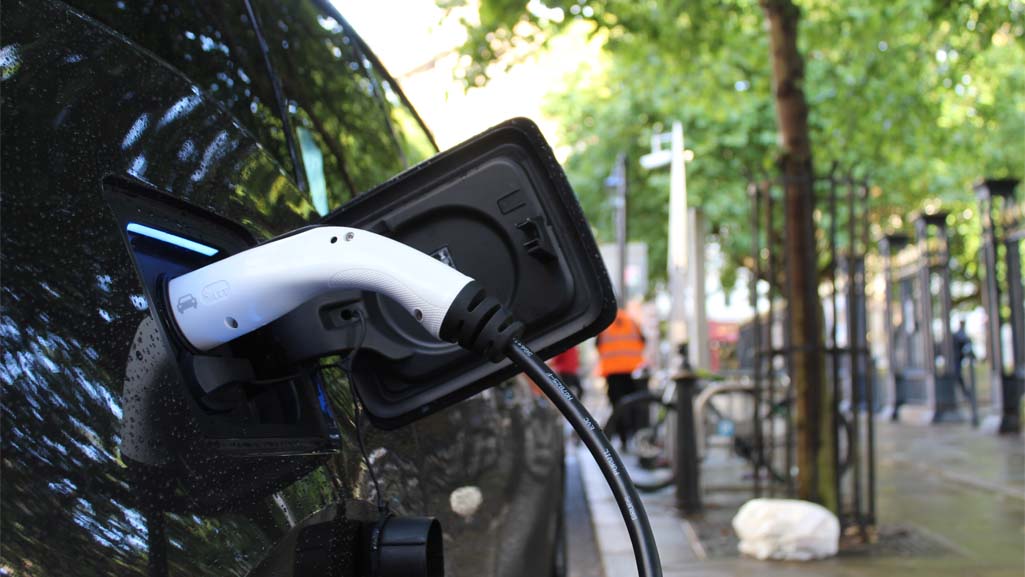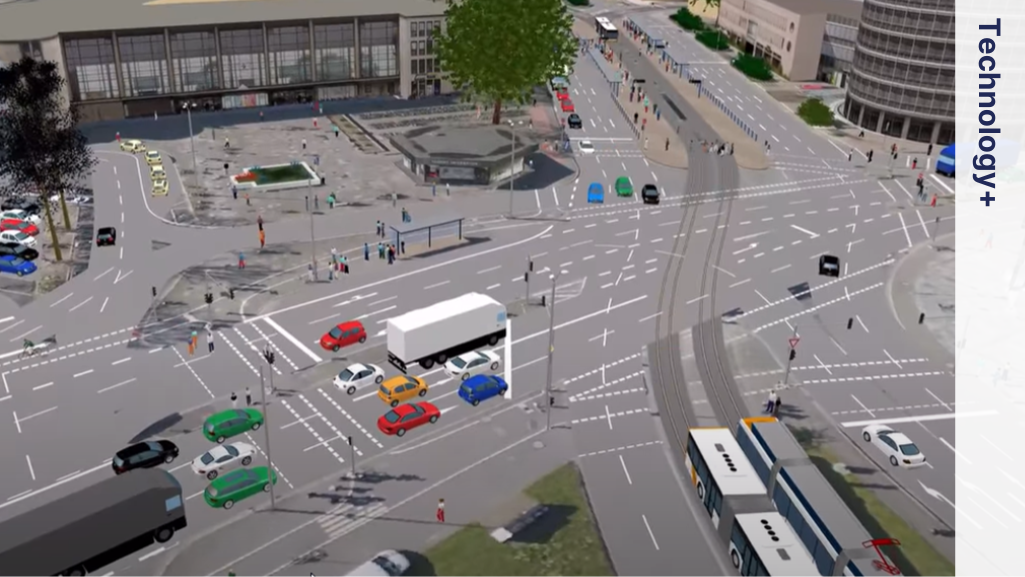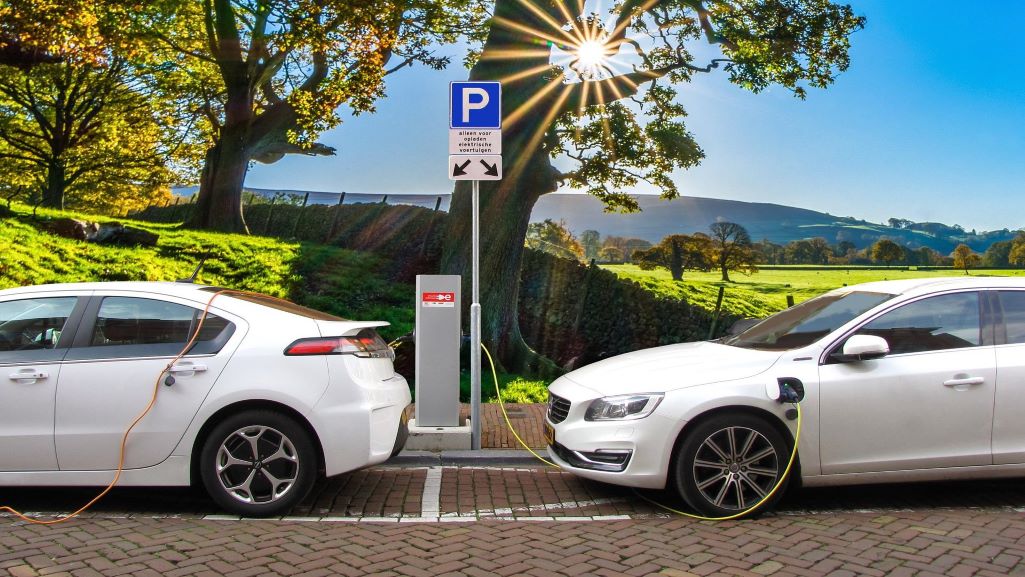As one of the main contributors to fossil fuel-based emissions, the transport sector has a big role to play on the road to Net Zero. Switching to electric vehicles (EVs) provides one means (of many that are needed) to reduce road-based carbon emissions and with EV costs falling, battery technology improving, and emissions targets coming into force, the 2020s is set to see a huge transition to electrified transport. This will also boost demand for charging stations. Public EV charging point networks must therefore be designed to cater for this demand.
The UK will ban the sale of new petrol and diesel cars by 2030, with many other countries introducing similar bans by 2035 or 2040. In Germany, the government has set a target to have 10 million EVs on the roads and 1 million public charging points installed by 2030. These levels are required to help meet carbon reduction plans and comply with EU standards on vehicle fleet emissions. However, there are currently only ~25,000 charging points in Germany, meaning 2,000 will need to be installed every week over the next decade to reach the target.
Demand forecast for efficient planning
With EV charging infrastructure rollout seen as a necessary enabling mechanism, city authorities and central governments are tasked with planning an efficient and equitable system that helps enable a society-wide transition to electrified mobility. To fully understand the challenge, the following aspects must be considered:
Where and how much?

The market continues to suffer with inertia with EV uptake hampered, partly, by insufficient infrastructure, and low levels of uptake restricting the revenue opportunity from charge point installation. This problem exists partly because government and industry do not know how many charging points are required, or where and how they should be specified. By understanding this requirement, governments can plan efficiently and provide targeted grant support where the market would otherwise fail. Similarly, private investors and charge point operators could identify their investment opportunity and scale their plans accordingly.
Connecting to the electricity grid
Siting charging points is far less constrained than the installation of petrol forecourts. However, a clear system for how and where you can connect to the electricity grid does not currently exist. By understanding where sufficient capacity exists therefore, installers will be able to make the most cost-effective choices when determining sites for their charging points. By understanding the potential demand for infrastructure, electricity network operators can plan their network upgrades accordingly and ensure that capacity constraints do not hamper infrastructure rollout.
Charge Project: Demand for charging stations & network capacity
The deployment of charging infrastructure on scale requires coordination between transport planners, local/city authorities, electricity network operators, and charging point installers. For the last two years we have been involved in an innovation project which brought together these elements: the UK-based Charge project – led by SP Energy Networks, an electricity network operator. The Charge Project’s purpose is to accelerate the deployment of public charging points for electric vehicles, whilst ensuring electricity networks and charging infrastructure provision is planned as efficiently as possible. To achieve this, project outputs are being made available to help local stakeholders understand where there is likely to be a growing demand for public charging points and where there is available network capacity.
Transport model to anticipate charging requirements
To understand the demand requirements from a transport perspective we developed a sophisticated model in PTV Visum, which helps assess the complex relationship between travel patterns, car ownership, demographics, and housing type. In turn, this data has been used to understand how EVs might be driven, where they will be parked, and how much electricity they will require.
With many external factors affecting the market however, it’s tricky to predict exactly how EV uptake will play out from between now and 2050. This is why we developed future scenarios to help explore many of the uncertainties around the future of the EV market
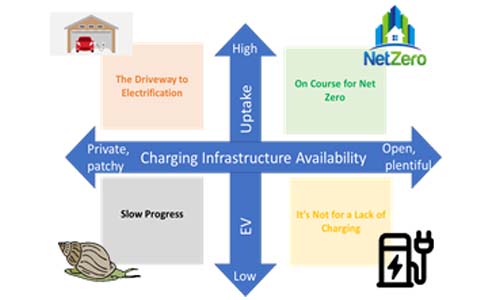
After considering a wide range of influences, we chose the two most critical issues: how EV uptake progresses (influenced by manufacturing supply, costs, future technology, etc.); and how usage of public charging might change (influenced by amount of EV users with or without a home charger, developments in technology, progress of EV rollout with support from industry or government, etc.). Instead of providing a single outlook therefore, the scenario analysis highlights a range of plausible outcomes: From “Slow Progress” to a “On course for Net Zero” scenario in the years up until 2050, allowing analysis and decisions to be made with a robust approach accounting for future uncertainty.
With the scenarios providing the overarching trends and EV uptake levels, this information was represented in the transport model to provide a detailed view of how uptake might progress and how travel patterns will affect the requirement for charging. Both EV uptake choice, estimated based on income, travel patterns, availability of off-street parking; and travel patterns were modelled down to an individual level. Representative charging demand profiles were then estimated for individual EVs, based on the following:
- Where EVs are likely to be driven and for what purpose
- How far they travel & how much energy is required
- When and where they might require charging
- How long the car is parked, and the electricity required to for charging sessions
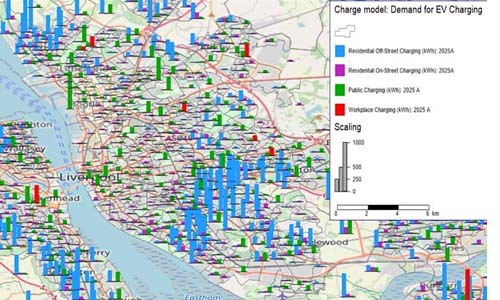
This information has been combined to provide estimated requirements for different types of charging – such as destination car parks, or enroute forecourts – across the whole region and made available on a public website. This information can therefore be used by local planners to assess the requirement for public charging and to understand the possible profile of demand – i.e. Is this area suitable for short stays and high power, or long stays and low power, and how does EV uptake affect this assessment?
EV charging: Pressure on the power grid
The Charge project tackled an additional critical issue: The capacity of the electricity networks. An EV adds the equivalent of an entire house to the electricity grid, so the power requirement is not trivial. In addition, power grids are limited by the capacity of cables and substations. Thus, for providers, the costs to install a public electric vehicle charging station depend on the location. Choosing the wrong locations might mean expensive grid upgrades.
Overlaying the transport model with electricity capacity data made it possible to understand the potential demand that is coming to the network, how that might change over time, and how the requirement for charging might impact the network.
For example, analysis of the “Net Zero” scenario showed a significant growth in electricity demand from EVs, growing 5-fold between 2025 and 2030, and then doubling again by 2035. This information can help identify where the best location for charging points is and where network upgrades are required.
CONNECTMORE Interactive Map
The model, built as part of the Charge Project, provides scenario-based forecasts to help anticipate the charging demand and infrastructure requirements for electric vehicles (EVs).
The main output of the Charge project is an online tool, the ConnectMore interactive map. It combines the detailed results from our transport model alongside an electricity network capacity model and thus provides planners, local authorities, charging point installers, and members of the public with data to investigate where public charging points will be needed, and where connections to the grid can be made at the lowest costs.
The Charge Transport Model has been built to cover the Manweb region in the North-West of the UK. However, the approach can easily be adopted in other regions to help understand EV infrastructure requirements. An EV infrastructure transport model is a powerful decision-support tool and should be used as part of a holistic approach to plan future charging networks.
